When trying to download a video on vevo by inspecting element, I discovered that that was impossible even though the content wasn't DRM protected. The video tag refers to a file that I can't trace or find using ctrl+I (Firefix Dev Edition), while it is still playing in the browser. Instead of /folder/video it says data:folder/video. How does this data: work?
-
The whole video is base64-encoded into a string/data URI. That's why you will see no reference to a separate video file. And it's actually not `data:folder/video`. It's `data:
;base64, – agrm Mar 10 '18 at 22:21;`
1 Answers
A quick Google search and our friend wikipedia says:
The data URI scheme is a uniform resource identifier (URI) scheme that provides a way to include data in-line in web pages as if they were external resources. It is a form of file literal or
heredocument. This technique allows normally separate elements such as images and style sheets to be fetched in a single Hypertext Transfer Protocol (HTTP) request, which may be more efficient than multiple HTTP requests.Syntax
The scheme followed by a colon (
data:).An optional media type. The media type part may include one or more parameters, in the format
attribute=value, separated by semicolons. A common media type parameter ischarset, specifying the character set of the media type, where the value is from the IANA list of character set names. If one is not specified, the media type of the data URI is assumed to betext/plain;charset=US-ASCII.An optional base64 extension
base64, separated from the preceding part by a semicolon. When present, this indicates that the data content of the URI is binary data, encoded in ASCII format using the Base64 scheme for binary-to-text encoding. The base64 extension is distinguished from any media type parameters by virtue of not having a=valuecomponent and by coming after any media type parameters.The data, separated from the preceding part by a comma. The data is a sequence of zero or more octets represented as characters. The comma is required in a data URI, even when the data part has zero length. The characters permitted within the data part include ASCII upper and lowercase letters, digits, and many ASCII punctuation and special characters. Note that this may include characters, such as colon, semicolon, and comma which are delimiters in the URI components preceding the data part. Other octets must be percent-encoded. If the data is Base64-encoded, then the data part may contain only valid Base64 characters. Note that Base64-encoded
data:URIs use the standard Base64 character set (with+and/as characters 62 and 63) rather than the so-called "URL-safe Base64" character set
